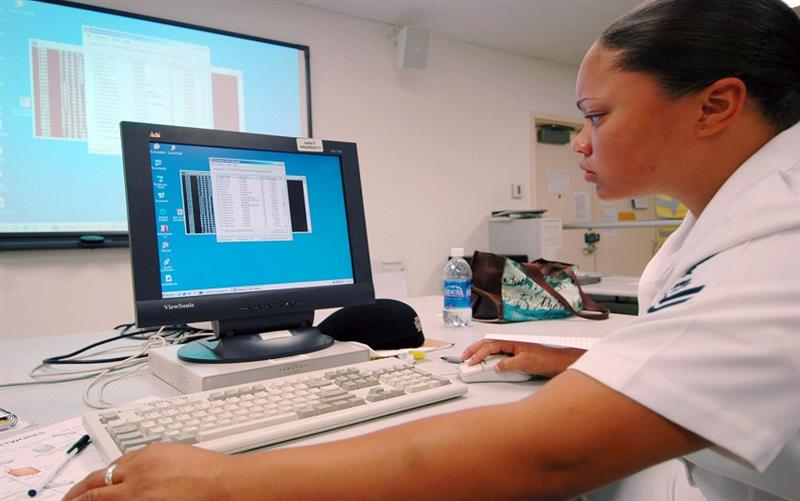
Medical software's continual development is vital to the future of healthcare. Medical software improves efficiency and compliance while also raising the standard of patient care by revolutionizing staff operations. The use of cutting-edge medical software solutions will be even more crucial to the success of healthcare companies as technology develops. Accepting these developments is essential to providing patients with high-quality treatment, enhancing patient outcomes, and assisting medical professionals in their essential tasks.
In a time when technology is revolutionizing every sector of the economy, the healthcare sector is leading the charge. Medical staff operations are being revolutionized by the necessity, not simply the trend, of integrating medical software into healthcare facilities. Medical software will shape healthcare in the future by improving patient care and reducing administrative tasks. This article examines the ways in which medical software is changing staff operations and explains why it is so important to contemporary healthcare procedures.
1. Simplified Procedures for Administration
The automation of administrative activities is one of the biggest effects of medical software. Healthcare employees used to devote a lot of time to scheduling, paperwork, and manual data entry. By automating repetitive operations, practice management software and Electronic Health Records (EHR) technologies are modernizing these processes today.
- Appointment Scheduling: Staff may more easily handle patient flow with the help of automated scheduling solutions, which minimize no-shows and maximize appointment slots.
- Billing and Coding: Medical billing software guarantees quicker claims processing and better revenue cycle management by streamlining the coding process and lowering errors.
2. Improved Interaction and Cooperation
In the healthcare industry, where patient care can be greatly impacted by team cooperation, effective communication is essential. Contemporary medical software systems improve cooperation and information exchange by enabling smooth contact between healthcare providers.
- Secure Messaging Systems: Real-time communication between medical professionals, nurses, and administrative personnel is made possible by integrated messaging features, which shorten response times and cut down on delays.
- Shared Patient data: By ensuring that all team members have access to the most recent information, centralized access to patient data promotes coordinated treatment and more informed decision-making.
3. Enhanced Care Coordination and Patient Management
Medical software is transforming patient care coordination and management in addition to staff operations. Treatment plans that are more individualized and successful are produced by instruments that facilitate thorough patient management.
- Patient portals: By enabling patients to contact with their care team, make appointments, and access their health information, these systems free up staff members from administrative duties.
- Tools for Care Coordination: Systems for integrated care management assist in monitoring the progress of patients, managing chronic illnesses, and guaranteeing that patients receive timely follow-ups and preventive care.
4. Data-Driven Decision Making
The way healthcare personnel make decisions has changed with the introduction of sophisticated analytics and data visualization tools in medical software. Insights derived from data are essential for enhancing both operational effectiveness and patient outcomes.
- Predictive analytics: These programs examine past data to forecast patient requirements, control the distribution of resources, and spot patterns that can improve the quality of care.
- Enhancement of Quality: Data dashboards and reporting tools support monitoring performance indicators, pinpointing areas in need of development, and putting evidence-based procedures into action.
5. Improved Guidance and Assistance
Additionally, medical software is essential to the continuous education and assistance provided to medical personnel. These days, many software systems include training modules and simulation tools as standard components that provide interactive learning opportunities.
- Training using Virtual Simulations: Staff members can become acquainted with new systems beforehand by using virtual simulations, which offer practical experience with software tools.
- On-demand help desks and knowledge bases provide continuous support so employees may promptly address problems and continue to work efficiently.
6. Security and Compliance
Ensuring patient data security and adhering to rules are critical in the healthcare industry. Medical software makes it easier for personnel to follow these guidelines.
- Regulatory Compliance: Automatic updates and compliance audits guarantee that procedures follow the most recent healthcare laws, including HIPAA in the US.
- Data security: Sensitive patient information is shielded from breaches and unwanted access by sophisticated security measures including encryption and access controls.
7. Upcoming Developments and Trends
Future developments in medical software are expected to bring even more advances that will improve staff operations as technology progresses.
- Artificial Intelligence (AI): Tools with AI capabilities are expected to transform administrative duties, treatment suggestions, and diagnostics, lightening the strain on medical personnel.
- Integration of Telemedicine: As telemedicine systems become more integrated, remote consultations and monitoring will be possible, increasing access to care and decreasing the need for in-person visits.
8. Supporting Staff Training and Development
Healthcare personnel must get ongoing training and development in order to stay up to date on new technologies and best practices. Training modules and other tools are frequently included in medical software to help staff members become proficient with new systems. Updated reference materials, simulated settings, and interactive lessons all help to create a workforce that is more competent and knowledgeable.
- Interactive Learning Modules: Modern medical software often includes interactive learning modules that offer engaging and effective training experiences. These modules can cover a wide range of topics, from software usage to clinical procedures.
- On-Demand Training Resources: Access to on-demand training resources ensures that healthcare staff can learn at their own pace and revisit materials as needed. Medical software platforms often include: